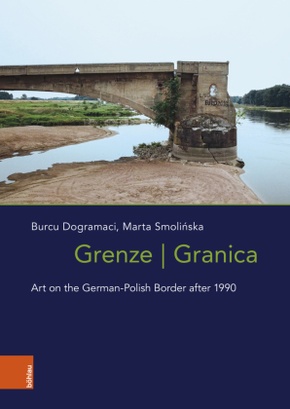Grenze/Granica - Art on the German-Polish Border after 1990
| Verlag | Böhlau |
| Auflage | 2024 |
| Seiten | 266 |
| Format | 17,5 x 2,2 x 24,5 cm |
| Gewicht | 870 g |
| Reihe | Das östliche Europa: Kunst- und Kulturgeschichte Band 019 |
| ISBN-10 | 3412528811 |
| ISBN-13 | 9783412528812 |
| Bestell-Nr | 41252881A |
The book employs a transdisciplinary toolbox, combining methods from art history, border (art) studies, migration studies, memory studies, geopoetics, limotrophy and more. It questions the double figure of dividing and sharing that finds expression in the German word "eine (Grenze) teilen": separation by a shared border and shared historical experience, regarded from two, often dissimilar perspectives. The study features a range of different art forms and artistic methods, which address the issue of the borderland as a dynamic transition space.
The German-Polish border: borderland as a space of art and transition
This book sets out to analyse for the very first time a selection of works by international contemporary artists that reference the German-Polish border, and to draw attention to artworks created between 1990 and the early 2020s. The projects explored reference narratives of expulsion and the fluid, spectral and aesthetic nature of borders through sensory and somaesthetic perception. They examine the historical shifts of that border from the angle of changing political and societal contexts, lost homelands, expulsion of people and new political orders.The book is the product of research in the field at the German-Polish border, interviews with artists, visits to their studios, and archival work. It employs a transdisciplinary toolbox, combining methods from art history, border (art) studies, migration studies, memory studies, geopoetics, limotrophy and more. The volume questions the double figure of dividing and sharing that finds expression in the German word "eine (Grenze) teile n", which means either to divide or to share a border: separation by a shared border and shared historical experience, regarded from two, often dissimilar perspectives. The study focuses on artistic projects ranging from photography to installation art and artistic methods from mapping to re-enacting, which address the issue of the borderland as a dynamic transition space.

